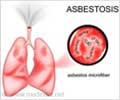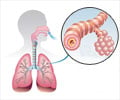Researchers have pointed out that exposing asthmatic children to heavy traffic pollution may augment respiratory problems and reduce lung volumes.
Researchers have pointed out that exposing asthmatic children to heavy traffic pollution may augment respiratory problems and reduce lung volumes.
The Emory University School of Medicine researchers studied the effects of road and traffic density on children’s lung function and respiratory symptoms in the border town of Ciudad Juarez in Mexico.The study was led by Fernando Holguin, M.D., M.P.H., assistant professor of pulmonary medicine at Emory University School of Medicine.
“Our results show that close proximity to vehicular traffic-related emissions, either at home or at school, can lead to chronic effects in the respiratory health of children with asthma,” said Dr. Holguin.
However, the effect of traffic-related pollutants with asthma severity was well known but the extent to which they affected airway inflammation and lung volume in both asthmatic and nonasthmatic children was unknown.
“Major cities along the northern and southern US borders often have high levels of vehicular traffic flows, especially at the border crossing points. Vehicular traffic emissions from the high density of border crossing traffic may be negatively affecting the health of populations who live in nearby areas,” said Dr. Holguin.
The researchers recruited 200 age- and sex-matched asthmatic and non-asthmatic schoolchildren from ages 6 to 12. In one year, they measured road and traffic density and traffic-associated pollutants near the children’s homes and schools, and examined each child’s lung function and respiratory symptoms consecutively for four months.
Advertisement
They had higher levels of exhaled NO, as well as reductions in both lung volume and airflow. The chances of respiratory symptoms in asthmatic children increased by more than 50 percent as a result of living within 50 meters of high density road areas.
Advertisement
However, increased traffic and road density near schools also indicated respiratory effects in both asthmatic and nonasthmatic children, the data did not achieve statistical significance in this study.
Nonetheless, Dr. Holguin pointed out, “This finding could have significant public health policy implications because a significant proportion of schools in many countries are located in close proximity to major roads.”
“These results are significant because they quantitatively demonstrate that closer exposure to roads lead to chronic airway inflammation and reductions in lung function.
“This study points the way for future research to determine what preventive measures may be taken to reduce exposure and or the health effects of vehicular emissions in susceptible children,” he added.
The study appeared in the recent issue of the American Journal of Respiratory and Critical Care Medicine, published by the American Thoracic Society.
Source-ANI
SRM/P







